In the realm of cutting-edge medical treatments, stem cell therapy stands out as a promising avenue for addressing a multitude of health conditions. However, as patients consider the potential benefits of stem cell injections, understanding the associated costs becomes paramount. Stem cell injections cost must be taken into consideration before moving forward with this innovative therapy.
From exploring the intricacies of stem cell therapy to dissecting the factors influencing treatment costs, we embark on a journey to comprehend the financial considerations involved in accessing this transformative medical intervention.
By navigating through the realms of stem cell treatment expenses, we aim to equip patients with the knowledge needed to make informed decisions about their healthcare journey.
What Are Stem Cell Therapies?

Stem cell injections involve the direct delivery of stem cells into specific areas of the body to promote tissue repair, regeneration, or therapeutic effects. These injections typically utilize stem cells sourced from various tissues.
They may include bone marrow, adipose tissue, or umbilical cord blood. Stem cell injections are a form of regenerative medicine that holds promise for treating a wide range of medical conditions, including musculoskeletal injuries, degenerative diseases, and inflammatory disorders.
The injected stem cells have the ability to differentiate into different cell types and release growth factors, cytokines, and other signaling molecules that facilitate tissue healing and modulate the body’s immune response.
Stem cell injections are administered via various routes, including intravenous, intra-articular (into joints), intramuscular, or localized injections to targeted tissues or organs. They represent an innovative approach to medical treatment aimed at harnessing the regenerative potential of stem cells to promote healing and improve patient outcomes.
How do you determine stem cell therapy cost?
Stem cell therapy cost will depend on many different factors, and no two situations are alike. First, it’s important that you seek treatment from a reputable and legitimate stem cell clinic in Los Angeles. Reports of low-cost stem cell clinics operating without qualified physicians are becoming more common.
Most insurance companies do not cover stem cell therapy as it is still considered experimental or investigational in many cases. The FDA has said that only bone marrow stem cells can be used for approved stem cell treatments.
Bone marrow or hematopoietic stem cell transplantation are very different matters. There is significant variability in the cost of platelet rich plasma and stem cell injections.
Explanation of Stem Cell Injections
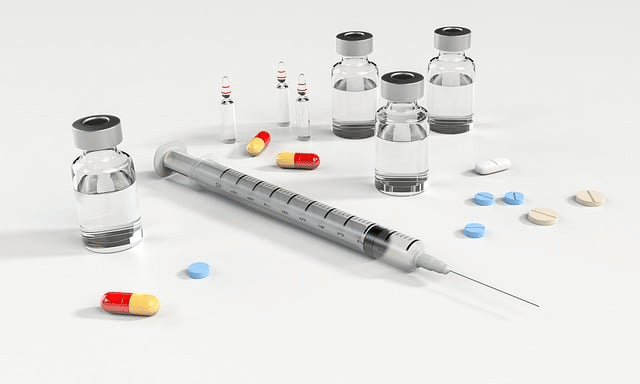
Stem cell injections involve the direct administration of stem cells into specific areas of the body to facilitate tissue repair, regeneration, or therapeutic effects. Stem cells, which are undifferentiated cells with the ability to develop into various cell types, are sourced from different tissues such as bone marrow, adipose tissue, or umbilical cord blood.
The process of stem cell injections typically begins with the extraction or isolation of stem cells from the chosen source. These stem cells are then processed and prepared for injection, often in conjunction with other substances or growth factors to enhance their therapeutic effects.
Once prepared, the stem cell solution is injected into the targeted area of the body, where it can exert its regenerative and healing properties. Depending on the condition being treated, stem cell injections may be administered through various routes such as intravenous, intra-articular (into joints), intramuscular, or localized injections to specific tissues or organs.
Stem cell therapy costs are high due to several factors, including the complexity of the procedures involved in harvesting and processing cells, specialized equipment requirements, and highly trained professionals needed for the administration of stem cell procedures.
Types of stem cell injections
Stem cell injections encompass various types, each tailored to specific medical conditions and treatment goals. Here are some common types:
Autologous Stem Cell Injections
Utilize stem cells sourced from the patient’s own body, typically from bone marrow or adipose tissue. Minimizes the risk of rejection or adverse reactions as the cells are derived from the patient’s own tissues. Commonly used in orthopedic conditions such as joint injuries, osteoarthritis, and musculoskeletal disorders.
Allogeneic Stem Cell Injections
Involve the use of stem cells derived from a donor, typically from umbilical cord blood or tissue. Can provide a readily available source of stem cells for therapeutic use. Used in various medical conditions including autoimmune disorders, neurodegenerative diseases, and hematological conditions.
Bone Marrow Stem Cell Injections
Extract stem cells from the patient’s bone marrow, usually from the hip bone. Commonly used in the treatment of blood disorders such as leukemia, lymphoma, and aplastic anemia. May also be utilized in orthopedic conditions and spinal cord injuries.
Adipose Stem Cell Injections
Harvest stem cells from the patient’s adipose (fat) tissue, typically through liposuction. Used in aesthetic procedures, orthopedic conditions, and wound healing. Adipose-derived stem cells are abundant and exhibit regenerative properties.
Umbilical Cord Blood Stem Cell Injections
Utilize stem cells collected from the umbilical cord blood of newborns. Can be stored in cord blood banks for future therapeutic use. Used in the treatment of various hematological disorders, immune deficiencies, and genetic conditions.
Intra-Articular Stem Cell Injections
Administer stem cells directly into joints, such as the knee, hip, or shoulder. Aimed at promoting cartilage repair, reducing inflammation, and improving joint function. Commonly used in the management of osteoarthritis and other degenerative joint diseases.
Intravenous Stem Cell Injections
Deliver stem cells systemically via the bloodstream. Aimed at targeting multiple tissues and organs throughout the body. Used in the treatment of systemic conditions such as autoimmune disorders, cardiovascular diseases, and neurological disorders.
These are some of the main types of stem cell injections, each offering unique advantages and applications in regenerative medicine and therapeutic interventions. The choice of stem cell injection type depends on factors such as the patient’s medical condition, treatment goals, and the expertise of healthcare providers.
Brief Overview of Conditions Potentially Treated with Stem Cell Injections

Stem cell injections are utilized in the treatment of various medical conditions across different medical specialties. Here’s a brief overview of some of the conditions commonly treated with stem cell injections:
Orthopedic Conditions
Osteoarthritis: Stem cell injections are used to promote cartilage repair and reduce inflammation in joints affected by osteoarthritis, particularly in the knees, hips, and shoulders.
Joint Injuries: Stem cells can aid in the repair of damaged tissues and promote healing in injuries such as ligament tears, tendonitis, and meniscal tears.
Spinal Disc Degeneration: Stem cell injections may help in regenerating spinal disc tissue and alleviating symptoms associated with degenerative disc disease.
Neurological Disorders
Parkinson’s Disease: Stem cell therapy holds promise for replacing damaged nerve cells and restoring dopamine production in patients with Parkinson’s disease, potentially improving motor symptoms and quality of life.
Alzheimer’s Disease: Stem cell injections may aid in neuroregeneration and cognitive function improvement in individuals with Alzheimer’s disease, though research in this area is ongoing.
Spinal Cord Injuries: Stem cell therapy aims to promote nerve regeneration and functional recovery following spinal cord injuries, potentially restoring motor and sensory function.
Cardiovascular Diseases
Heart Issues: Stem cell injections can aid in the repair and regeneration of damaged heart tissue, improving cardiac function and symptoms in patients with heart failure.
Myocardial Infarction: Stem cells may promote the formation of new blood vessels and cardiac muscle cells, reducing scar tissue formation and improving heart function following a heart attack.
Autoimmune Disorders
Multiple Sclerosis (MS): Stem cell therapy aims to modulate the immune response and promote nerve repair in individuals with MS, potentially slowing disease progression and reducing relapses.
Rheumatoid Arthritis: Stem cell injections may help reduce inflammation and promote tissue repair in joints affected by rheumatoid arthritis, improving mobility and reducing pain.
Hematological Disorders
Leukemia and Lymphoma: Stem cell transplantation, often derived from bone marrow or umbilical cord blood, is a standard treatment for various blood cancers, replacing diseased blood cells with healthy ones.
These are just a few examples of the conditions treated with stem cell injections, illustrating the broad range of therapeutic applications across different medical specialties.
Research in stem cell therapy continues to advance, offering hope for improved treatment outcomes and quality of life for patients with various medical conditions.
Factors Influencing Stem Cell Injection Costs
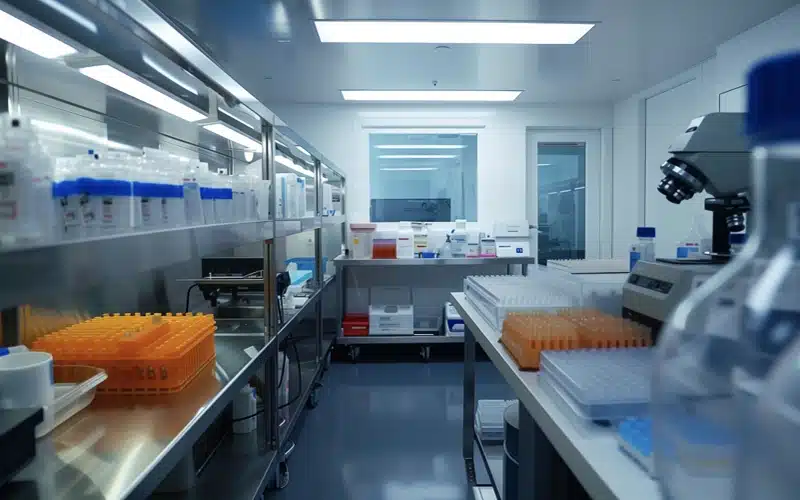
Several factors influence the cost of stem cell injections, making it a variable expense dependent on various considerations. Here are some key factors that influence the cost:
Type of Stem Cell Therapy
Different types of stem cell therapy offer unique approaches to treatment, each with its own set of considerations and costs. Autologous stem cell therapy, which uses the patient’s own stem cells, often involves additional steps such as harvesting and processing the cells, which can contribute to higher expenses.
Allogeneic stem cell therapy, on the other hand, utilizes stem cells from a donor, which may require less preparation but can still incur costs associated with screening and compatibility testing.
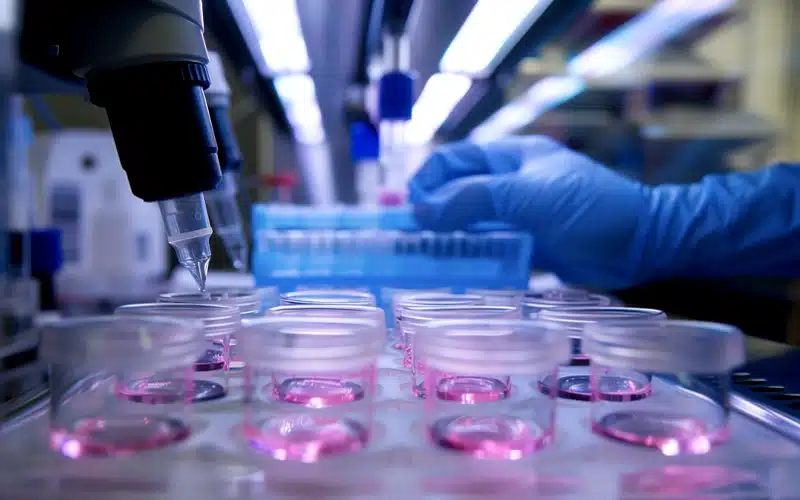
Source of Stem Cells
The source from which stem cells are derived plays a significant role in determining the overall cost of therapy. Stem cells obtained from bone marrow or adipose tissue typically require invasive procedures for extraction, as well as specialized processing techniques for isolation and purification.
In contrast, stem cells sourced from umbilical cord blood or tissue may be obtained from cord blood banks and undergo less extensive processing, potentially reducing associated costs.
Treatment Location and Facility
The geographical location and the healthcare facility where stem cell therapy is performed can impact treatment costs. Healthcare costs can vary significantly between regions and countries due to differences in labor, infrastructure, and healthcare regulations.
Additionally, treatment at specialized medical centers with state-of-the-art facilities and experienced healthcare providers may command higher fees compared to smaller clinics or outpatient facilities.
Physician’s Expertise and Experience
The expertise and experience of the physician performing stem cell injections can influence treatment costs. Physicians with specialized training and extensive experience in stem cell therapy may charge higher fees for their services, reflecting the added value of their skills and knowledge.
Patients may choose to prioritize the qualifications and reputation of healthcare providers when selecting a treatment provider, understanding that expertise often comes at a premium.
Treatment Protocol and Follow-Up Care
The complexity of the treatment protocol and the extent of follow-up care required can impact overall treatment costs. Factors such as the number of injections, the frequency of follow-up visits, and the duration of post-treatment monitoring and rehabilitation can all contribute to expenses.
Additionally, ancillary services such as diagnostic tests, imaging studies, and physical therapy may be necessary components of the treatment plan, adding to the total cost of therapy.
Regulatory Compliance and Licensing
Compliance with regulatory requirements and licensing standards is essential for ensuring patient safety and treatment quality in stem cell therapy.
Healthcare providers offering stem cell injections must adhere to regulatory guidelines established by government agencies and professional organizations, which may involve additional administrative and operational costs. These regulatory compliance costs may be reflected in the overall pricing of stem cell therapy services.
Insurance Coverage and Reimbursement
The availability of insurance coverage for stem cell therapy varies depending on factors such as the type of treatment, the patient’s insurance plan, and regional healthcare policies.
While some insurance plans may provide partial or full coverage for certain types of stem cell therapy, others may consider it an elective or experimental procedure and offer limited or no coverage.
Patients should carefully review their insurance policies and consult with their insurance providers to understand their coverage options and potential out-of-pocket expenses.
Research and Development Costs
Stem cell therapy often involves ongoing research and development efforts, including clinical trials, scientific studies, and technological advancements. These research and development costs are inherent to the field of regenerative medicine and may contribute to the overall expenses associated with stem cell therapy.
While patients may not directly bear these costs, they indirectly influence treatment pricing by shaping the landscape of stem cell therapy and driving innovation in the field.
By considering these factors comprehensively, patients gain a better understanding of the cost implications associated with stem cell injections and make informed decisions about their healthcare options.
Patients need to discuss all potential costs and financial considerations with their healthcare providers to ensure transparency and clarity throughout the treatment process.
Average Cost of Stem Cell Injections
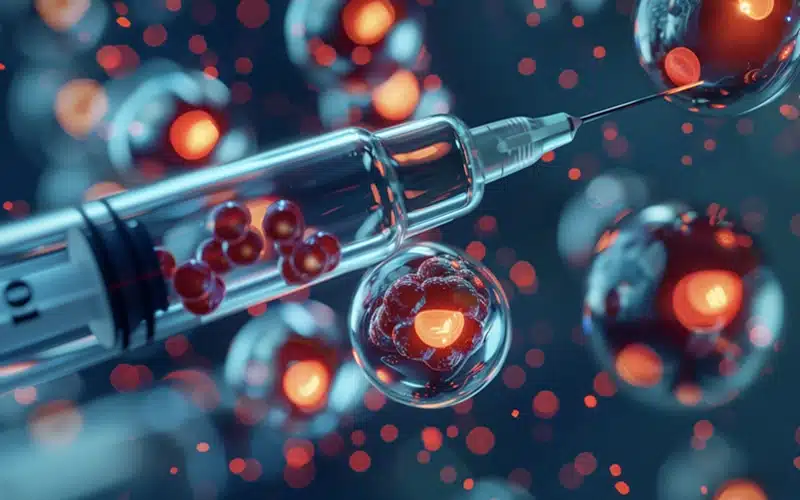
Determining the average cost of stem cell injections can be challenging due to the variability in treatment protocols, healthcare facilities, geographical locations, and other factors. However, here is a general overview of the factors that may contribute to the overall cost of stem cell injections:
Type of Stem Cell Therapy: The type of stem cell therapy being administered can significantly impact the cost. Autologous stem cell therapy, which utilizes the patient’s own cells, may involve additional expenses for cell extraction, processing, and preparation. In contrast, allogeneic stem cell therapy, which uses donor cells, may have different cost considerations related to cell acquisition, compatibility testing, and storage.
Source of Stem Cells: Stem cells can be derived from various sources such as bone marrow, adipose tissue, umbilical cord blood, or placental tissue. The cost of stem cell injections may vary depending on the complexity of the extraction procedure, the availability of donor sources, and the processing techniques involved in isolating and purifying the cells.
Treatment Location and Facility: The geographical location and the healthcare facility where the stem cell injections are administered can influence treatment costs. Treatment at specialized medical centers with state-of-the-art facilities and experienced healthcare providers may command higher fees compared to smaller clinics or outpatient facilities in less populated areas.
Physician’s Expertise and Experience: The expertise and experience of the physician performing the stem cell injections can also impact treatment costs. Physicians with specialized training and extensive experience in stem cell therapy may charge higher fees for their services, reflecting the added value of their skills and knowledge.
Treatment Protocol and Follow-Up Care: The complexity of the treatment protocol, including the number of injections required, the frequency of follow-up visits, and the duration of post-treatment monitoring and rehabilitation, can all contribute to treatment costs. Additional expenses may include diagnostic tests, imaging studies, and physical therapy as part of the comprehensive treatment plan.
Insurance Coverage and Reimbursement: Insurance coverage for stem cell injections varies depending on factors such as the type of treatment, the patient’s insurance plan, and regional healthcare policies.Some insurance plans may provide partial or full coverage for certain types of stem cell therapy, while others may consider it an elective or experimental procedure and offer limited or no coverage. Patients should consult with their insurance providers to understand their coverage options and potential out-of-pocket expenses.
Research and Development Costs: Stem cell therapy often involves ongoing research and development efforts, including clinical trials, scientific studies, and technological advancements. These research and development costs may contribute to the overall expenses associated with stem cell injections, although they may not be directly borne by the patient.
While it is difficult to provide an exact average cost of stem cell injections due to these various factors, patients should discuss all potential costs and financial considerations with their healthcare providers to ensure transparency and clarity throughout the treatment process.
Insurance Coverage and Financing Options for Stem Cell Therapies

Insurance coverage for stem cell injections can vary significantly depending on factors such as the type of treatment, the patient’s insurance plan, and regional healthcare policies.
While some insurance plans may provide partial or full coverage for certain types of stem cell therapy, others may consider it an elective or experimental procedure and offer limited or no coverage.
It is essential for patients to thoroughly review their insurance policies and consult with their insurance providers to understand their coverage options and potential out-of-pocket expenses.
Stem Cell Therapy Costs & How to Address Them
For patients facing out-of-pocket expenses for stem cell injections, there are several financing options available to help manage the cost of treatment:
Health Savings Accounts (HSAs) and Flexible Spending Accounts (FSAs): HSAs and FSAs allow individuals to set aside pre-tax funds to cover eligible medical expenses, including stem cell therapy. Patients can use these accounts to pay for treatment costs and may benefit from tax advantages such as reduced taxable income and tax-free withdrawals for qualified medical expenses.
Medical Loans and Financing Plans: Many healthcare financing companies offer medical loans and financing plans specifically designed to cover the cost of elective medical procedures, including stem cell therapy. These loans typically offer flexible repayment terms and competitive interest rates, allowing patients to spread out the cost of treatment over time.
Healthcare Credit Cards: Some credit card companies offer specialized healthcare credit cards that can be used to pay for medical expenses, including stem cell injections. These cards may offer promotional financing options such as zero-interest or low-interest financing for a specified period, providing patients with temporary relief from interest charges.
Payment Plans and Installment Agreements: Healthcare providers may offer payment plans or installment agreements to patients who are unable to pay for stem cell therapy upfront. These arrangements allow patients to spread out the cost of treatment over several months or years, making it more manageable within their budget.
Patients need to explore all available financing options and discuss their financial concerns with their healthcare providers. By proactively addressing financial considerations, patients can better navigate the cost of stem cell therapy and access the treatment they need to improve their health and well-being.
Frequently Asked Questions

What factors influence the cost of stem cell injections?
The cost of stem cell injections can vary depending on factors such as the type of stem cell therapy, the source of stem cells, the treatment location and facility, the physician’s expertise and experience, the treatment protocol and follow-up care, insurance coverage and reimbursement, and research and development costs.
Does insurance cover the cost of stem cell injections?
Insurance coverage for stem cell injections varies depending on factors such as the type of treatment, the patient’s insurance plan, and regional healthcare policies. Some insurance plans may provide partial or full coverage for certain types of stem cell therapy, while others may consider it an elective or experimental procedure and offer limited or no coverage.
What are some financing options available to help manage the cost of stem cell injections?
Patients facing out-of-pocket expenses for stem cell injections have several financing options available, including health savings accounts (HSAs) and flexible spending accounts (FSAs), medical loans and financing plans, healthcare credit cards, payment plans, and installment agreements offered by healthcare providers, and crowdfunding and fundraising platforms.
How can I determine the average cost of stem cell injections?
Determining the average cost of stem cell injections can be challenging due to the variability in treatment protocols, healthcare facilities, geographical locations, and other factors. Patients should consult with healthcare providers and obtain cost estimates based on their specific treatment needs and circumstances.
Are there any financial assistance programs available for stem cell therapy?
Some stem cell therapy providers may offer financial assistance programs or patient assistance programs to help eligible patients afford treatment. These programs may provide discounts, grants, or scholarships to qualifying individuals based on financial need, medical necessity, or other criteria.
What should I consider when evaluating the cost of stem cell injections?
When evaluating the cost of stem cell injections, patients should consider factors such as the potential benefits of treatment, the expertise and experience of healthcare providers, the quality and safety of treatment facilities, the availability of insurance coverage, and the financial impact on their overall healthcare budget.
Is stem cell therapy covered by health insurance?
No, other than the use of hematopoietic stem cell transplantation (HSCT) to treat cancer, most stem cell therapies are not covered by health insurance.
Can I negotiate the cost of stem cell injections with healthcare providers?
Patients may have the opportunity to negotiate the cost of stem cell injections with healthcare providers, particularly if they are paying out-of-pocket or if insurance coverage is limited. It is recommended to discuss pricing options and payment arrangements directly with healthcare providers to explore potential discounts or payment plans.
Are there any hidden costs associated with stem cell injections?
Patients should be aware of potential hidden costs associated with stem cell injections, such as additional fees for diagnostic tests, imaging studies, follow-up appointments, and post-treatment care. It is important to obtain a comprehensive breakdown of all potential costs upfront and to ask questions about any fees or expenses that may arise during the treatment process.
Stem Cell Treatment Options & Injection Costs at Local Stem Cell Clinics
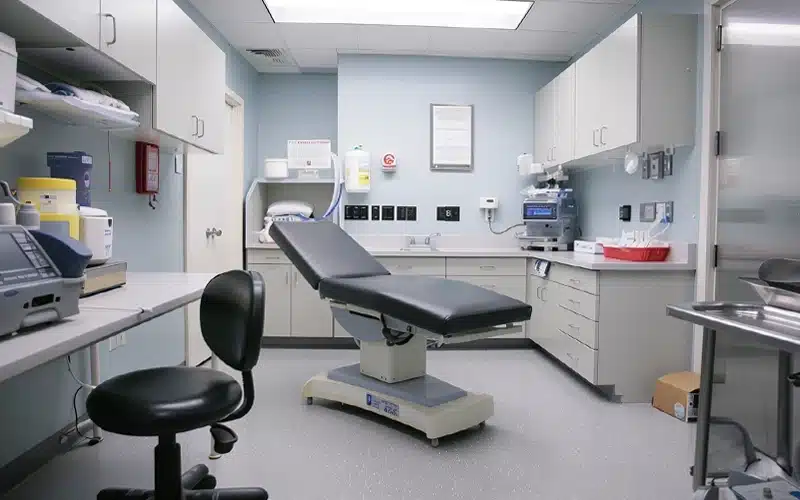
The cost of stem cell injections is influenced by various factors, including the type of therapy, source of stem cells, treatment location, physician expertise, insurance coverage, and financing options. While determining an exact average cost can be challenging due to the variability in treatment protocols and healthcare settings, patients should carefully consider all financial aspects when exploring stem cell therapy.
Furthermore, patients need to advocate for themselves and actively engage with healthcare providers to address any financial concerns or questions. By discussing stem cell treatment cost considerations upfront and exploring available resources for financial assistance or payment plans, patients can make informed decisions about their healthcare journey.
Ultimately, while the cost of stem cell injections may present financial challenges for some individuals, it is important to prioritize health and well-being. With careful planning and collaboration between patients, healthcare providers, and insurers, access to stem cell therapy can be made more accessible, ensuring that patients receive the treatment they need to improve their quality of life and overall health.
If you are interested in learning more about stem cell treatment cost associated with your disorder, please feel free to reach out to the team at Stem Cells LA. We’re always here to help you understand stem cell injection cost factors and to get you the most accurate data possible.


